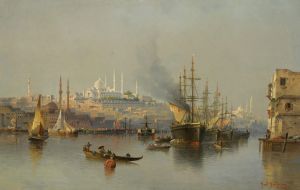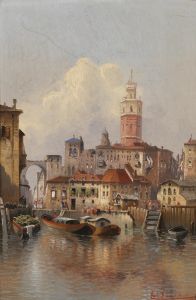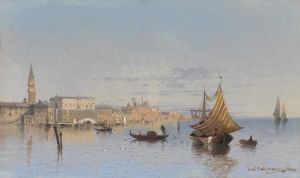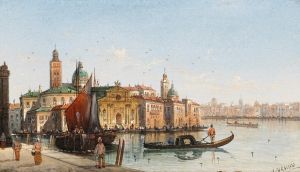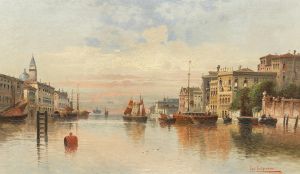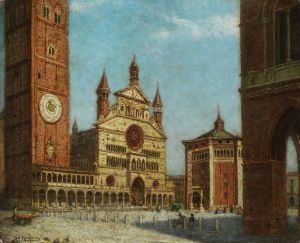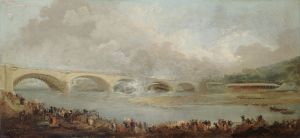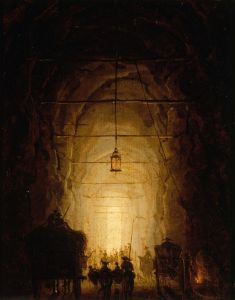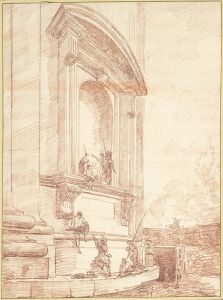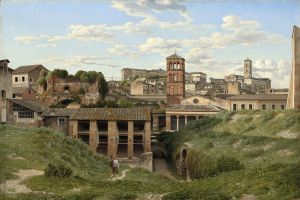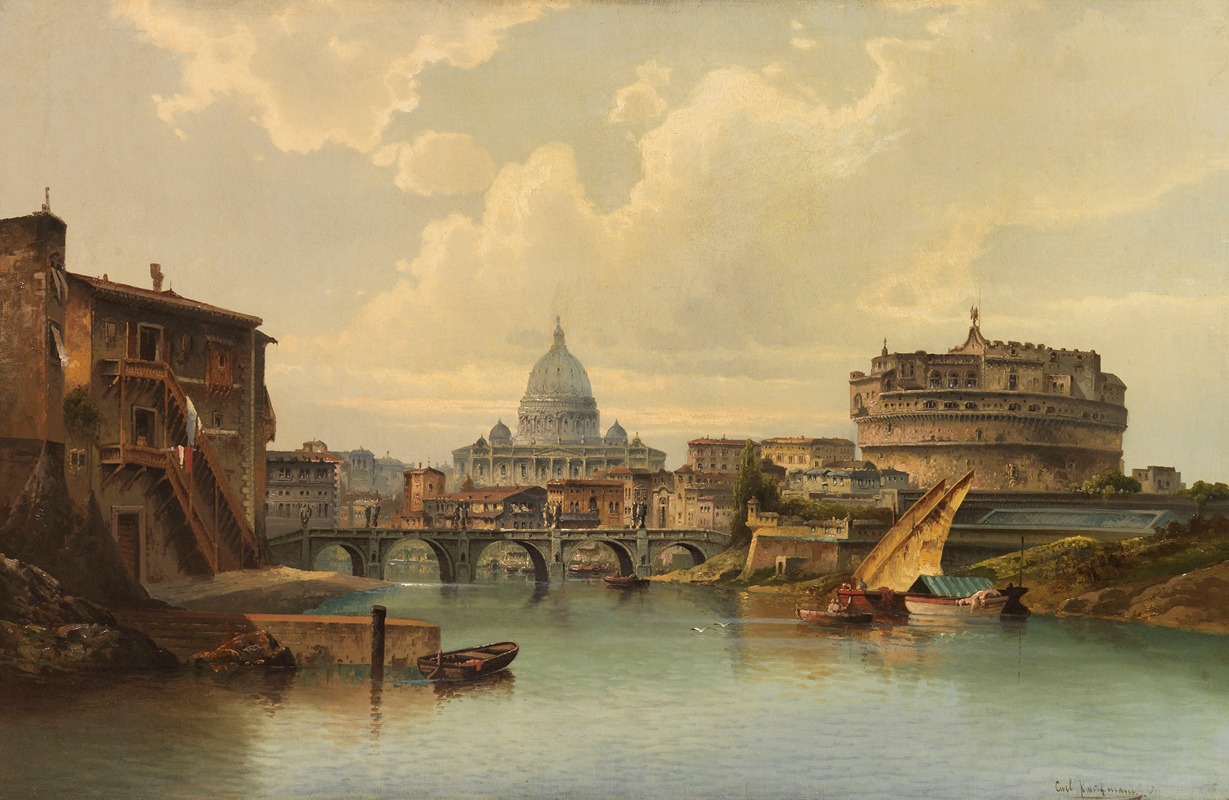
Ansicht von Rom mit St. Peter und Engelsburg
A hand-painted replica of Karl Kaufmann’s masterpiece Ansicht von Rom mit St. Peter und Engelsburg, meticulously crafted by professional artists to capture the true essence of the original. Each piece is created with museum-quality canvas and rare mineral pigments, carefully painted by experienced artists with delicate brushstrokes and rich, layered colors to perfectly recreate the texture of the original artwork. Unlike machine-printed reproductions, this hand-painted version brings the painting to life, infused with the artist’s emotions and skill in every stroke. Whether for personal collection or home decoration, it instantly elevates the artistic atmosphere of any space.
Karl Kaufmann was an Austrian painter known for his detailed and atmospheric landscapes and cityscapes. He was born in 1843 in Neuplachowitz, Austrian Silesia, and he passed away in 1905. Kaufmann's works often depicted European cities and landscapes, capturing the essence and architectural beauty of these locations. His paintings are characterized by their meticulous attention to detail and vibrant use of color, which bring the scenes to life.
One of his notable works is "Ansicht von Rom mit St. Peter und Engelsburg," which translates to "View of Rome with St. Peter and Castel Sant'Angelo." This painting showcases a picturesque view of Rome, focusing on two of its most iconic landmarks: St. Peter's Basilica and Castel Sant'Angelo. These landmarks are situated along the Tiber River, which is also prominently featured in the painting.
St. Peter's Basilica, located in Vatican City, is one of the largest churches in the world and a significant site for the Roman Catholic Church. Its impressive dome, designed by Michelangelo, dominates the skyline of Rome and is a central feature in Kaufmann's painting. The basilica is renowned for its Renaissance architecture and its significance as a pilgrimage site.
Castel Sant'Angelo, also known as the Mausoleum of Hadrian, is a towering cylindrical building initially commissioned by the Roman Emperor Hadrian as a mausoleum for himself and his family. Over the centuries, it has served various purposes, including as a fortress and a papal residence. The castle is connected to the Vatican by the Passetto di Borgo, a fortified corridor, and is a prominent feature in the Roman landscape.
Kaufmann's painting captures the serene beauty of Rome, with the Tiber River gently flowing through the scene. The use of light and shadow in the painting highlights the architectural details of the buildings and creates a sense of depth and realism. The artist's skillful rendering of the water and sky adds to the tranquil atmosphere of the composition.
Kaufmann often traveled extensively throughout Europe, and his works reflect his keen interest in capturing the unique character of each location he visited. His paintings were popular during his lifetime and continue to be appreciated for their historical and artistic value. "Ansicht von Rom mit St. Peter und Engelsburg" is a testament to Kaufmann's ability to convey the grandeur and timeless beauty of Rome through his art.
While specific details about the creation and exhibition history of this particular painting may not be widely documented, it remains an excellent example of Kaufmann's work and his contribution to the genre of landscape and cityscape painting. His paintings are held in various private collections and occasionally appear in art auctions, where they are sought after by collectors who appreciate his detailed and evocative style.






